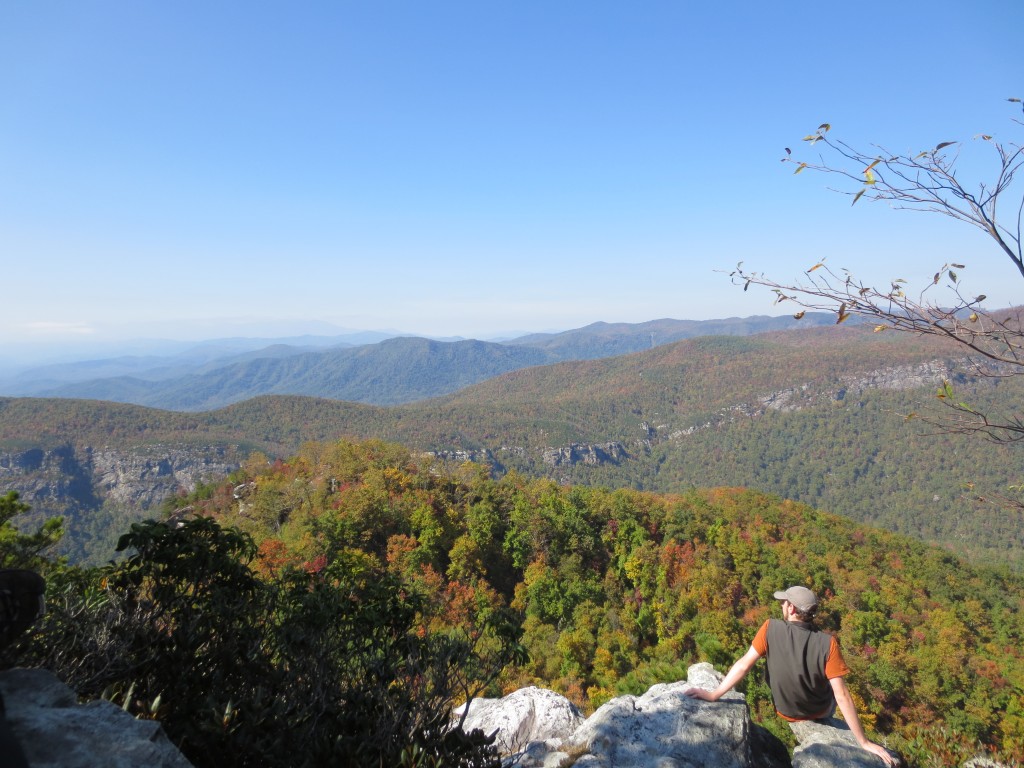A year ago I could have boldly made a claim that I know the University of Richmond Campus like the back of my hand. Late night walks, explorations, and classes all over the place have given me a very good understanding of the location of places on campus, and yet I’ve learned this semester that just because I can find my way around campus doesn’t mean I know much about it.
In one of the first classes this semester Dr. Lookingbill asked our where was north. It took a bit of reasoning but I eventually figured it out, and yet to this day I’m still surprised how much effort it took to answer that simple direction question. It was at this time that I began to learn about the university as a geographic place not just a place.
In my and many of my classmates blog posts we all talked about watersheds and our campus’s watershed (John/George). I didn’t really think watersheds sounded interesting, the name just makes it seem like some shed where water is stored for some baseball team. Its synonyms catchment and drainage basin also don’t sound that invigorating. But what we all learned this semester was watersheds are interesting. Watersheds connect us to other lands, rivers, streams, and ultimately oceans. Until class discussions and a guest from Michelle Kokolis I never understood how much we affect our rivers through what we do in the rivers watershed and how small changes we make affect our river. Before the semester I also didn’t know about the two creeks that fed the lake. Like many of my classmates (link) I was surprised about the creeks; however I was most surprised to find out that most of the water that feeds the lake comes from off campus. I was shocked at how we weren’t in such a secluded bubble.
However we did not only learn about abiotic factors in our class, we learned about the organisms we share this land with. In class we discussed on several occasions organisms that inhabited the river. My in river time lecture was also on river organisms (link). During the semester I remember hearing about various sightings of a bald eagle on campus. On a class trip Ralph White spoke to us about the fish in the river and their migration as we watched Blue Herons as the males anticipated the return of the females. On the same trip was also when the class began to learn about tree identification though we only began with river trees.
Due to a summer of working identifying trees I already was aware of many of the trees on campus when I began Earth Lodge. I was surprised at the diversity of the trees on campus. There were so many different interesting trees. There are cherry blossoms, oaks, maples, tulip poplars, even my favorite tree, the Dawn Redwood(The strange tree near the commons on Westhampton). The Dawn Redwood is a species over 100 Million years old and is considered a “living fossil.” It is a distant relative of the sequoia and was thought to be extinct, but trees were found in china and cultivated all over the world. For more info go here (link). It was sad in the fall watching the leaves go. It was hard to look at the trees and figure what they were just by bark. In class I got better at identifying the trees on bark alone. However, recently as shown in some fellow blogs (link), the leaves have returned. It’s strange watching the leaves grow, becoming more defined as they get fuller and greener. It’s comforting to see the leaves again and be able to again know the tree I’m looking at.
Looking at my latest blogs I notice many of them have been about events off of campus. I’m grateful to Earth Lodge for getting me involved off campus. It has made me much more aware of what is around us and how much the City of Richmond and the James River has to offer. Before this class I knew little of the James River, or its history. I knew nothing about places like the William Byrd House (John) or about the homeless encampments on islands in the river. I had never been to belle isle and never knew about the pipeline walk. I didn’t know the bloody history of the James River and how it has always, since the Powhatan Indians, a river of kings. Like Thomas (link), Earth Lodge has helped me fall in love with Richmond.
Despite all I have learned, or possibly because of all I have learned, I know now there is so much I don’t know about where I am. I don’t know much about the air or soil, and I can’t identify all of the trees and many of the animals. There are also many plants that I cannot even begin to identify. I have yet to see any larger mammals on campus. There is also more of the James and Richmond to explore. It’s both strange and good to know I may never fully know my place, but that means I always have a chance to learn something new. Plus it makes it harder to get bored of a place.
Part of me finds it sad to know that chances are I might not have a class like Earth Lodge again. I may not have a class so immersive, so involved outside the classroom, and so engaging. Geography of the James taught me a love of the place called Richmond, but it also taught me to love the place I am in. When I go back home, I know I’ll have a deeper appreciation of my home’s geography and environment. Earth Lodge and its class was a great experience that I am glad to be a part of.
This is John Remmes, signing off.

